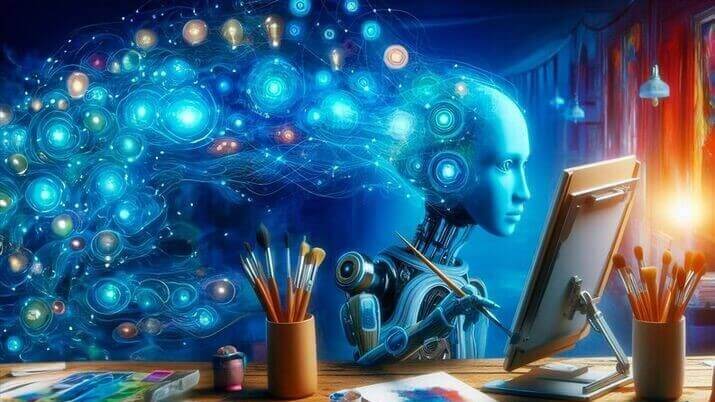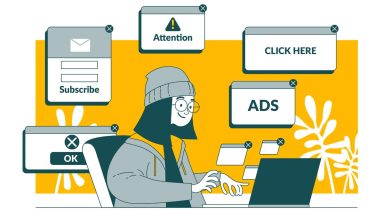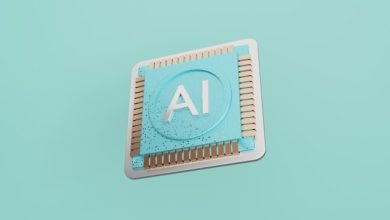
In just a few short years, generative AI has moved from being a futuristic concept to becoming a central force reshaping creative industries. From art and music to film, fashion, and marketing, AI-driven tools are not only supporting creators but also changing the very nature of creativity itself. While some fear that AI could replace human imagination, others see it as a powerful partner that expands what’s possible.
This article explores how generative AI is transforming creative industries, the opportunities it brings, and the challenges it raises.
What Is Generative AI?
Generative AI refers to a subset of artificial intelligence that can create new content such as text, images, music, video, or code. Unlike traditional AI systems that simply analyze or classify data, generative AI produces original outputs by learning from large datasets.
Popular tools like ChatGPT, DALL·E, MidJourney, and Stable Diffusion have made generative AI accessible to the masses, while specialized platforms in music, film, and design are revolutionizing professional workflows.
Key Areas Where Generative AI Is Making an Impact
1. Visual Arts and Design
Artists and designers are using AI-powered platforms to generate illustrations, digital paintings, logos, and even 3D models. What once took hours of manual sketching can now be prototyped in minutes.
- Graphic designers use AI to quickly explore multiple style variations.
- Fashion brands apply AI to create patterns, textures, and entire clothing lines.
- Interior designers leverage generative AI for realistic room mockups.
Rather than replacing artistry, these tools often serve as inspiration engines, giving creators new directions to explore.
- Music and Audio Creation
Musicians and producers are embracing generative AI to compose melodies, harmonies, and beats. Platforms like AIVA and Amper Music can create royalty-free background tracks in seconds.
- Film and game studios use AI to generate immersive soundscapes.
- Independent artists experiment with AI for remixing and co-writing.
- Voice synthesis allows creators to design unique virtual singers.
AI doesn’t just automate music—it helps artists experiment with genres and sounds they may never have imagined.
- Film, Animation, and Gaming
The entertainment industry is being revolutionized by AI in ways both subtle and spectacular.
- AI can generate storyboards, scripts, and even dialogue drafts.
- In animation, tools help create lifelike character movements or backgrounds.
- Video game studios use AI for world-building and non-playable character (NPC) behaviors.
Generative AI cuts down production costs and timelines, making storytelling more accessible to independent creators while pushing the boundaries of large-scale productions.
- Marketing and Advertising
Generative AI is becoming a game-changer for marketers. From personalized ad copy to instantly generated campaign visuals, AI speeds up creative cycles.
- Brands create customized visuals for different audience segments.
- AI-driven tools write social media posts, blogs, and email content.
- Generative AI enables rapid A/B testing by producing multiple ad variations.
This shift allows marketing teams to move faster and connect with audiences in more targeted, creative ways.
- Publishing and Content Creation
Writers and publishers are leveraging AI to brainstorm ideas, generate first drafts, and even produce entire books.
- Journalists use AI to assist with summaries and fact-checking.
- Authors explore AI-generated plots and character development.
- Bloggers save time by automating repetitive content.
Although human oversight is still essential, generative AI is becoming a powerful collaborator in the writing process.
Opportunities and Benefits
Generative AI offers several advantages for creative industries:
- Speed and Efficiency: Content that once took weeks can now be created in hours.
- Accessibility: Independent creators gain tools previously available only to big studios.
- Inspiration: AI sparks new creative directions, reducing creative blocks.
- Personalization: Content can be tailored for individual tastes and markets.
Challenges and Ethical Concerns
Despite its promise, generative AI also raises important questions:
- Originality: Who owns AI-generated content—the creator or the algorithm?
- Copyright: AI models trained on existing works may replicate copyrighted styles.
- Job Displacement: Some worry about reduced demand for human creatives.
- Bias and Representation: AI-generated outputs may reflect societal biases in training data.
Balancing innovation with ethical responsibility will be key to ensuring that AI enhances creativity without undermining human contributions.
The Future of Creativity with AI
As generative AI continues to evolve, it’s likely that human-AI collaboration will define the future of creative industries. AI will handle repetitive or technical tasks, freeing humans to focus on vision, emotion, and storytelling—the uniquely human aspects of creativity.
In this hybrid model, AI is not a replacement for creativity but a creative partner that amplifies human potential.
Conclusion
Generative AI is no longer a novelty—it’s a transformative force across creative industries. From visual design and music to film, marketing, and publishing, AI is reshaping how we create, distribute, and experience art and media.
The real opportunity lies in how humans choose to work with these technologies. By embracing AI as a collaborator rather than a competitor, creative professionals can unlock new forms of expression and reach audiences in ways never before possible.




